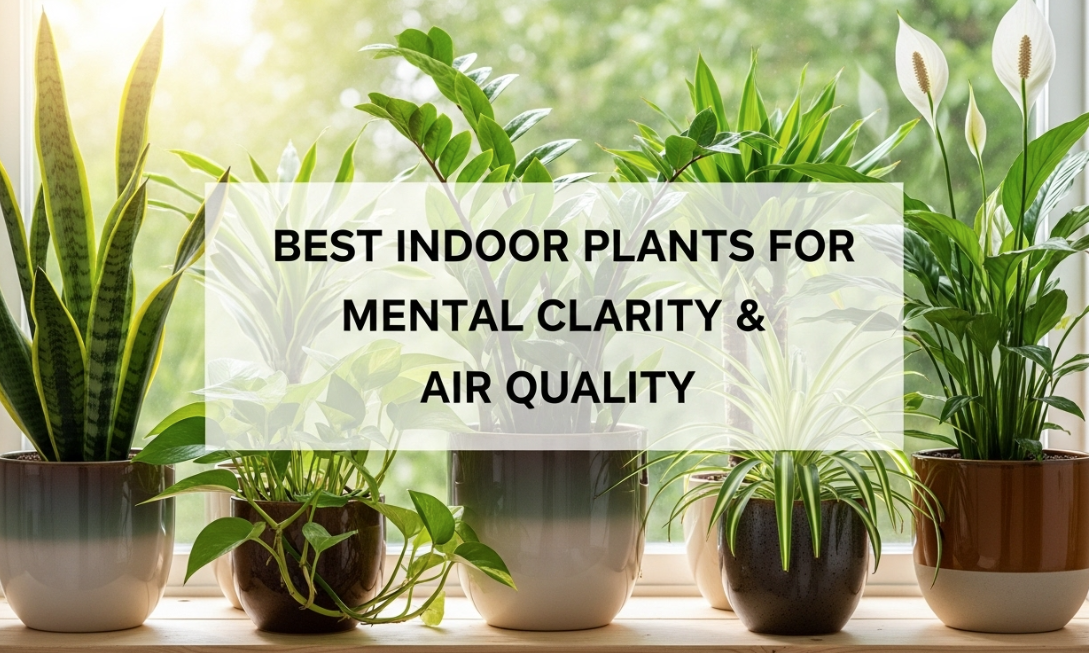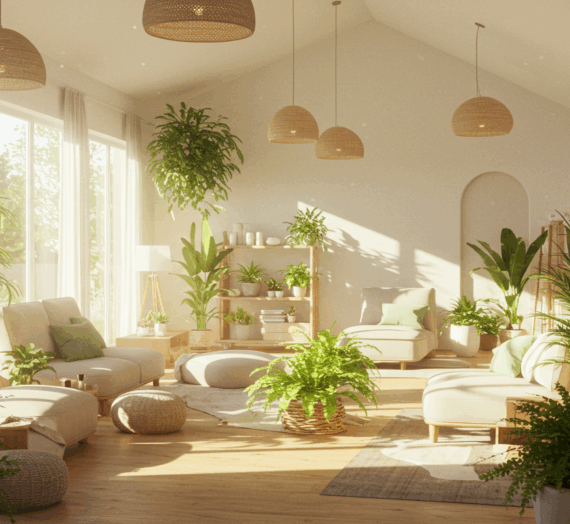Indoor Plants for Mental Clarity and Cleaner Air
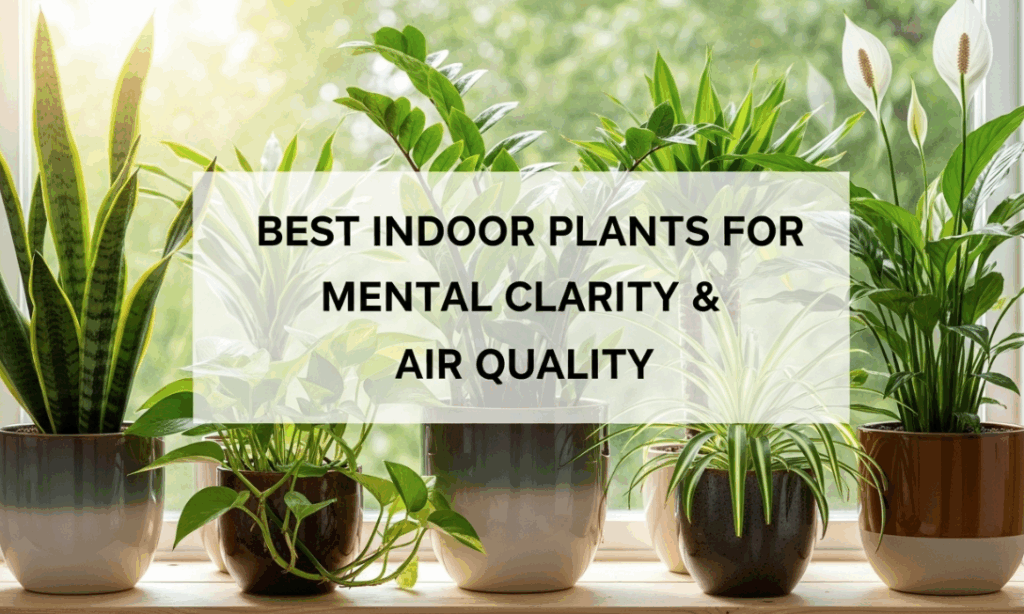
Introduction: Breathe Deeply, Think Clearly
Imagine walking into a room that feels fresh, calm, and alive. That’s the power of indoor plants. Not only do they add visual charm to your space, but the right greenery can also clear the air and sharpen your mind. In today’s fast-paced world, curating your own green sanctuary is a simple yet powerful step toward better mental clarity and indoor wellness.
For a research overview on how indoor greenery can influence cognition and mood, see this systematic review and meta-analyses of indoor plants and human functions.
Why Plants Belong in Your Wellness Space
Indoor plants do more than decorate. Scientific research has shown that plants can reduce stress levels, improve focus, and even boost productivity. At the same time, they filter out toxins and increase oxygen levels, making your environment healthier. Whether you’re working from home or seeking a tranquil space to unwind, the presence of greenery fosters a deeper connection to nature and well-being.
Some landmark lab work on pollutant removal comes from NASA’s experiments in sealed chambers often cited as the NASA Clean Air Study. In real homes, results can vary; agencies note ventilation and filtration still matter a lot see the U.S. EPA guidance on indoor air quality.
Common Myths About Indoor Plants
Many people hesitate to bring plants indoors because they fear maintenance or don’t think they have a green thumb. But the truth is, many wellness-friendly plants are incredibly forgiving. You don’t need a greenhouse or daily rituals just a bit of light, a weekly check-in, and a willingness to learn. Plus, plants are versatile. Whether you live in a sunlit apartment or a dim loft, there’s a plant that will thrive in your space.
Explore beginner-friendly options and care basics here: Google search or Bing search.
Top 10 Plants for Mental Clarity and Cleaner Air
| Plant | Key wellness/air note | Light | Care |
|---|---|---|---|
| Snake Plant | Hardy; nighttime O2 release (CAM) | Low–bright, indirect | Easy |
| Peace Lily | Popular in NASA lab study | Medium, indirect | Moderate |
| Aloe Vera | Soothing gel; succulent | Bright, direct/indirect | Easy |
| Spider Plant | Resilient; helps humidity | Bright, indirect | Easy |
| Lavender | Aroma linked to relaxation | Full sun/very bright | Moderate |
| Pothos | Adaptable trailing vine | Low–bright, indirect | Easy |
| Rubber Plant | Bold leaves; statement | Medium–bright | Moderate |
| English Ivy | Lab evidence on mold/particles | Bright, indirect | Moderate |
| Bamboo Palm | Adds height; moisture | Medium, indirect | Moderate |
| ZZ Plant | Thrives in low light | Low–medium | Easy |
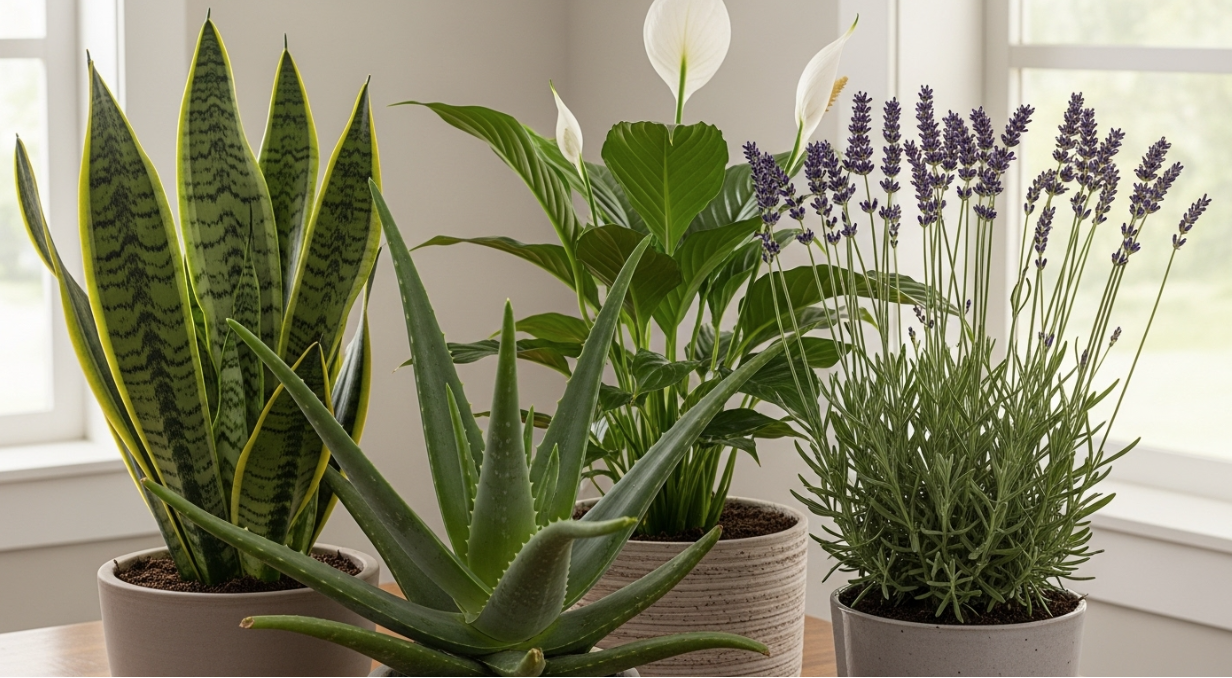

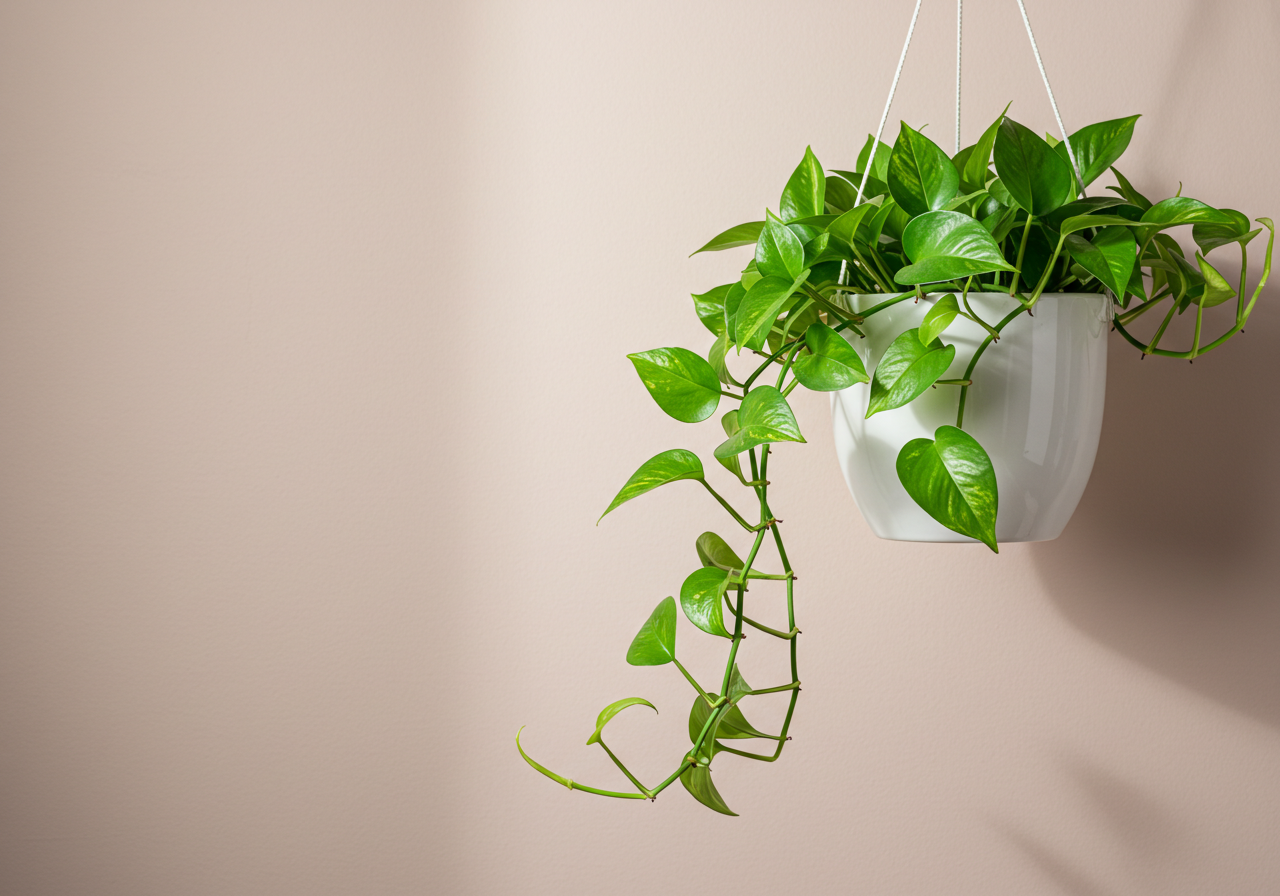
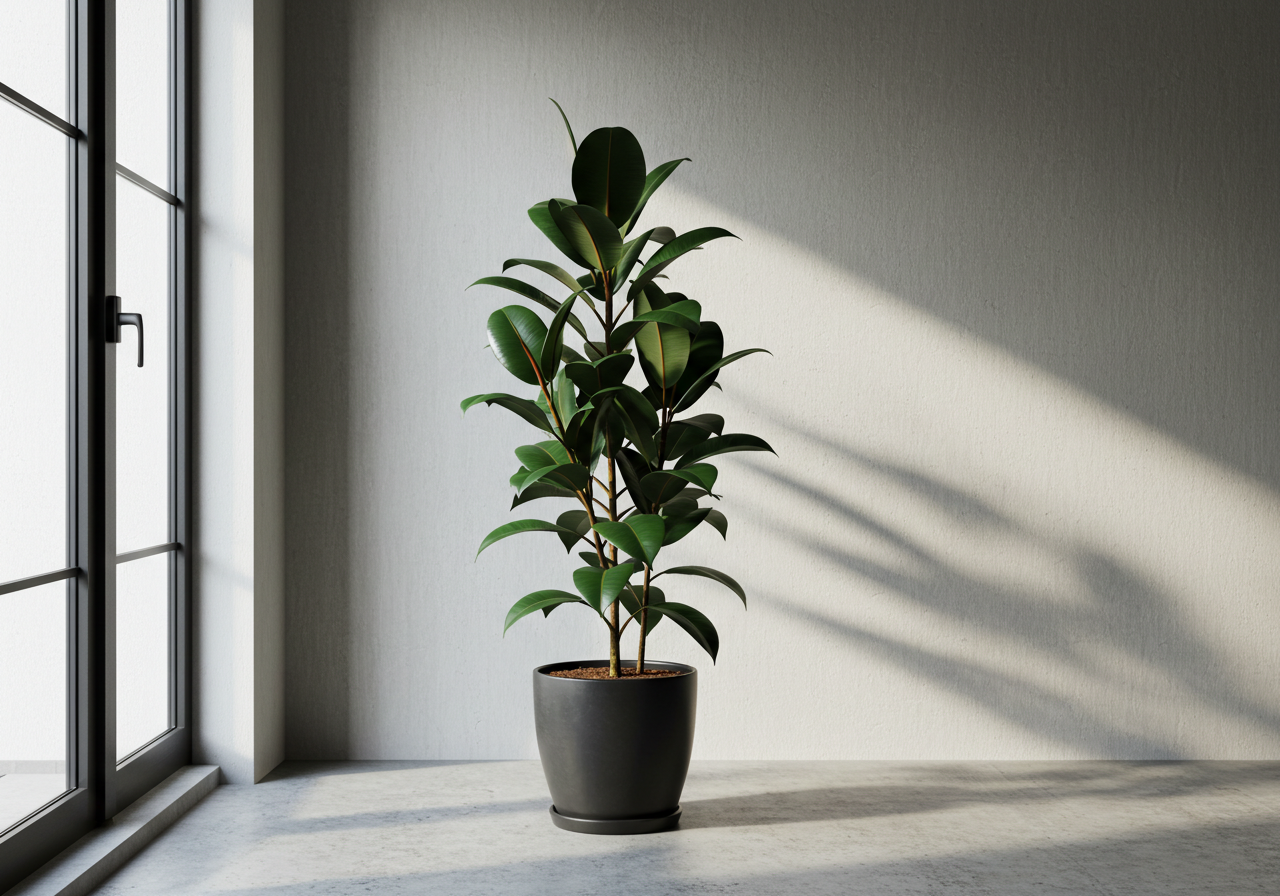
1. Snake Plant (Sansevieria)
Known for its air-purifying qualities, the snake plant is low-maintenance and perfect for beginners. It releases oxygen at night, making it ideal for bedrooms and meditation spaces.
Snake plants are CAM succulents that can release oxygen in low-light periods; for an accessible overview of plant CAM physiology, see crassulacean acid metabolism.
2. Peace Lily
With its elegant white blooms and glossy leaves, the peace lily removes toxins like benzene and formaldehyde. It also adds calming beauty to any corner.
Peace lily performance was highlighted in chamber tests within the NASA Clean Air Study.
3. Aloe Vera
This succulent is both functional and healing. Besides purifying the air, aloe vera gel can soothe skin, making it a great addition to bathroom wellness setups.
For care and common uses, see Aloe vera indoor care.
4. Spider Plant
A favorite for hanging planters, spider plants are resilient and thrive in indirect light. They’re known to reduce pollutants and increase humidity great for dry spaces.
See practical humidity tips with spider plants on Bing.
5. Lavender
Though typically grown outdoors, lavender can do well indoors with proper light. Its scent is famous for reducing anxiety and supporting restful sleep.
Evidence links lavender aroma with better sleep or reduced anxiety in select groups; see RCT findings in college students and a review on lavender and the nervous system.
6. Pothos
This cascading vine is adaptable and visually pleasing. Pothos helps remove indoor toxins and brings a lush, relaxing vibe to shelves and workspaces.
Compare pothos varieties and care basics via Google.
7. Rubber Plant
With deep green, waxy leaves, rubber plants are bold air purifiers. They thrive in moderate light and symbolize abundance and protection in Feng Shui practices.
Light and pruning tips: Rubber plant indoor care.
8. English Ivy
English ivy is ideal for hanging baskets or climbing frames. It’s especially effective at filtering mold and allergens, which enhances respiratory health indoors.
Small-container tests have reported reductions in airborne mold/particles; see summaries from University of Georgia and coverage of trial data here.
9. Bamboo Palm
A tropical option that loves indirect light, the bamboo palm adds height and elegance while quietly filtering toxins and increasing moisture in the air.
Placement and watering basics: Bamboo palm indoor care.
10. ZZ Plant
Practically indestructible, the ZZ plant is perfect for darker spaces. Its waxy, thick leaves give a sculptural look while subtly cleaning the air.
Low-light care checklist: ZZ plant care.
Designing with Plants in Wellness Spaces
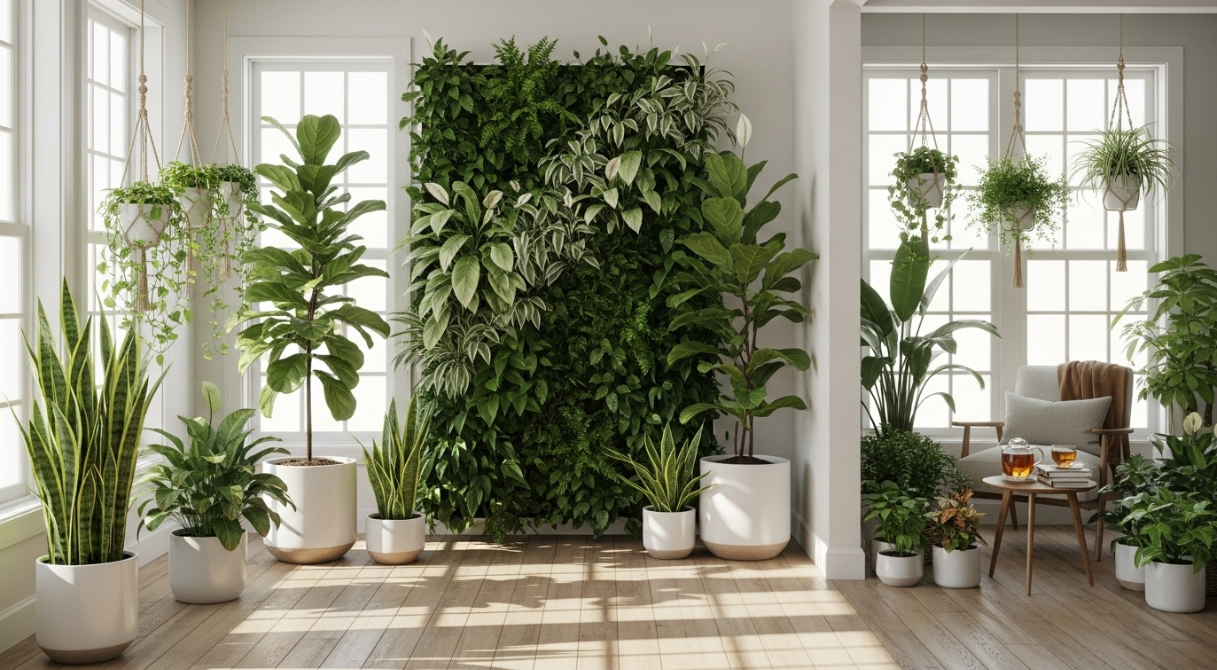
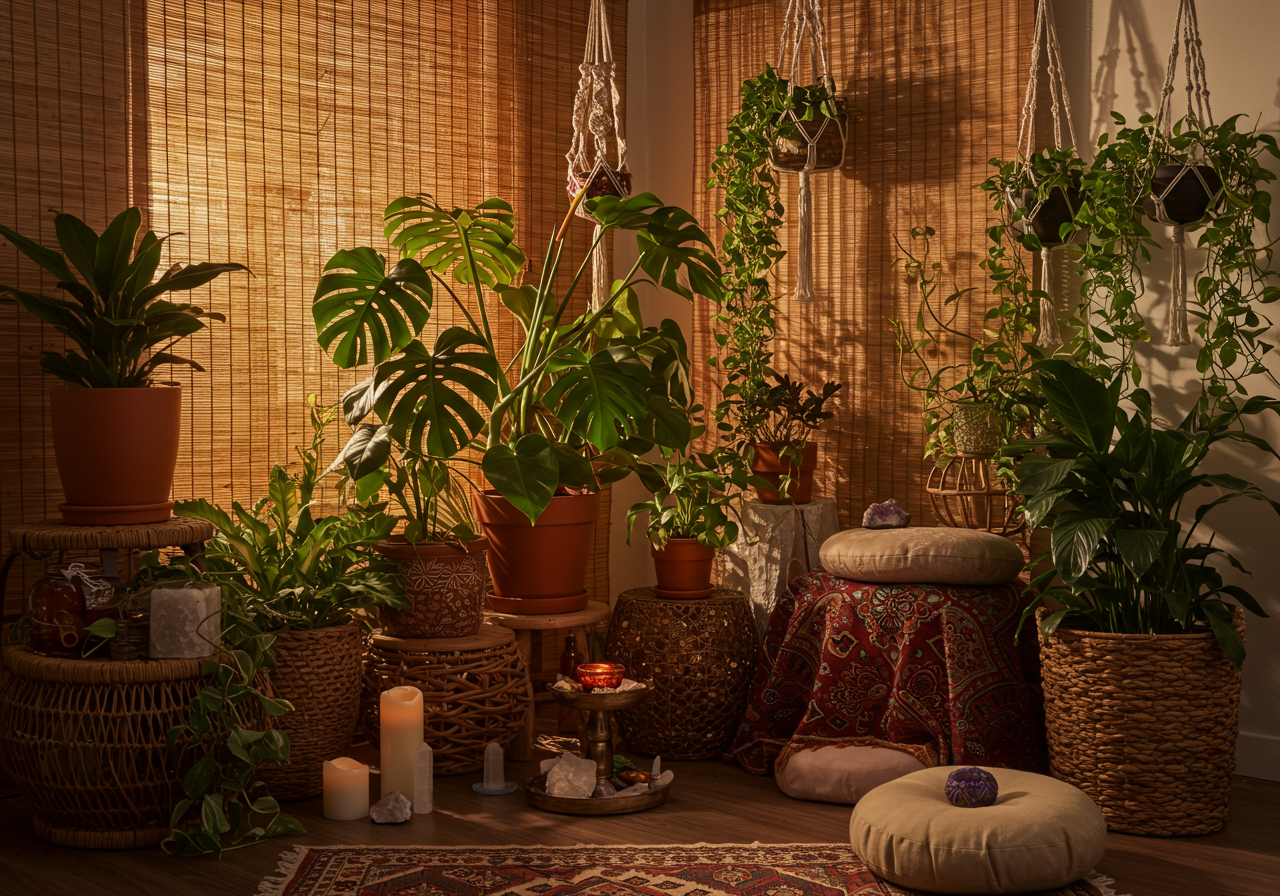
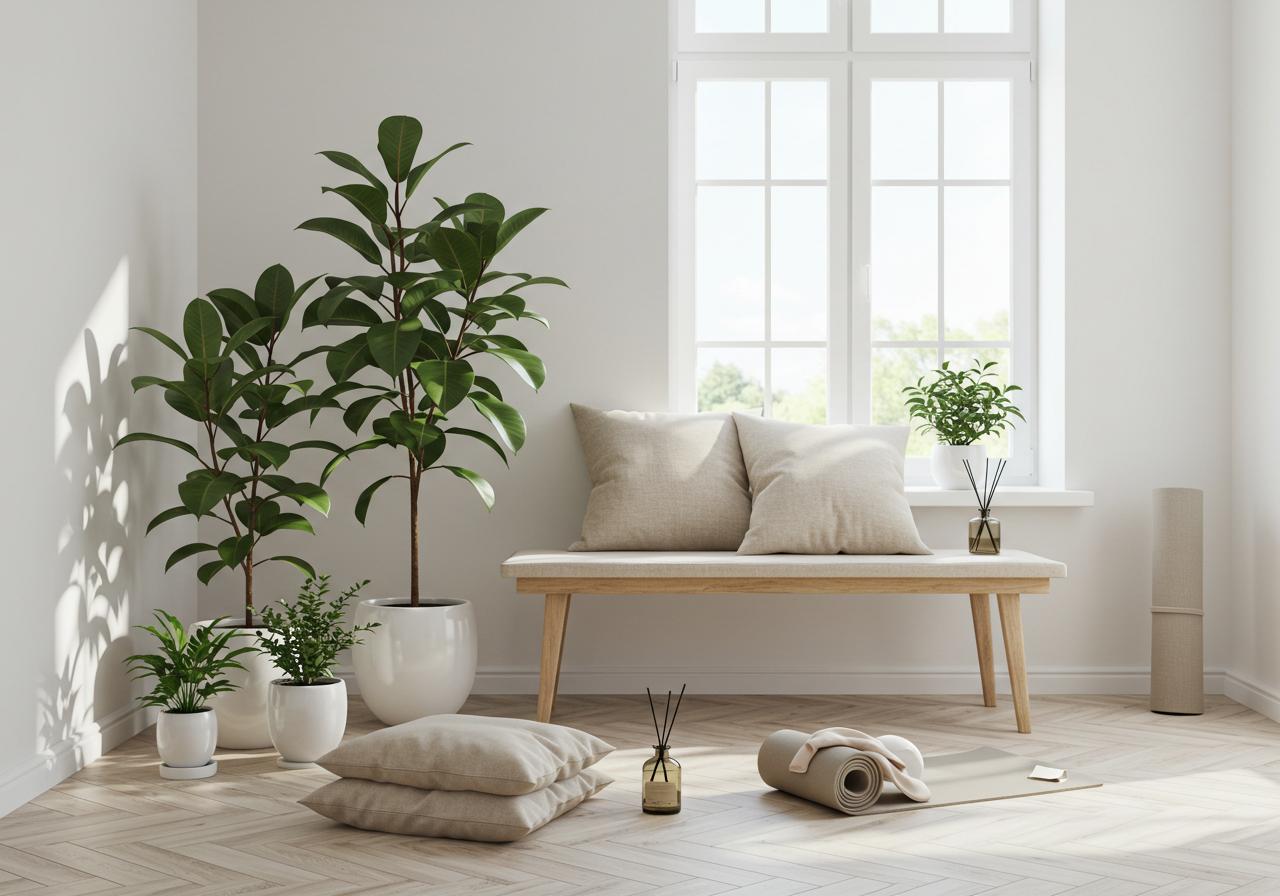
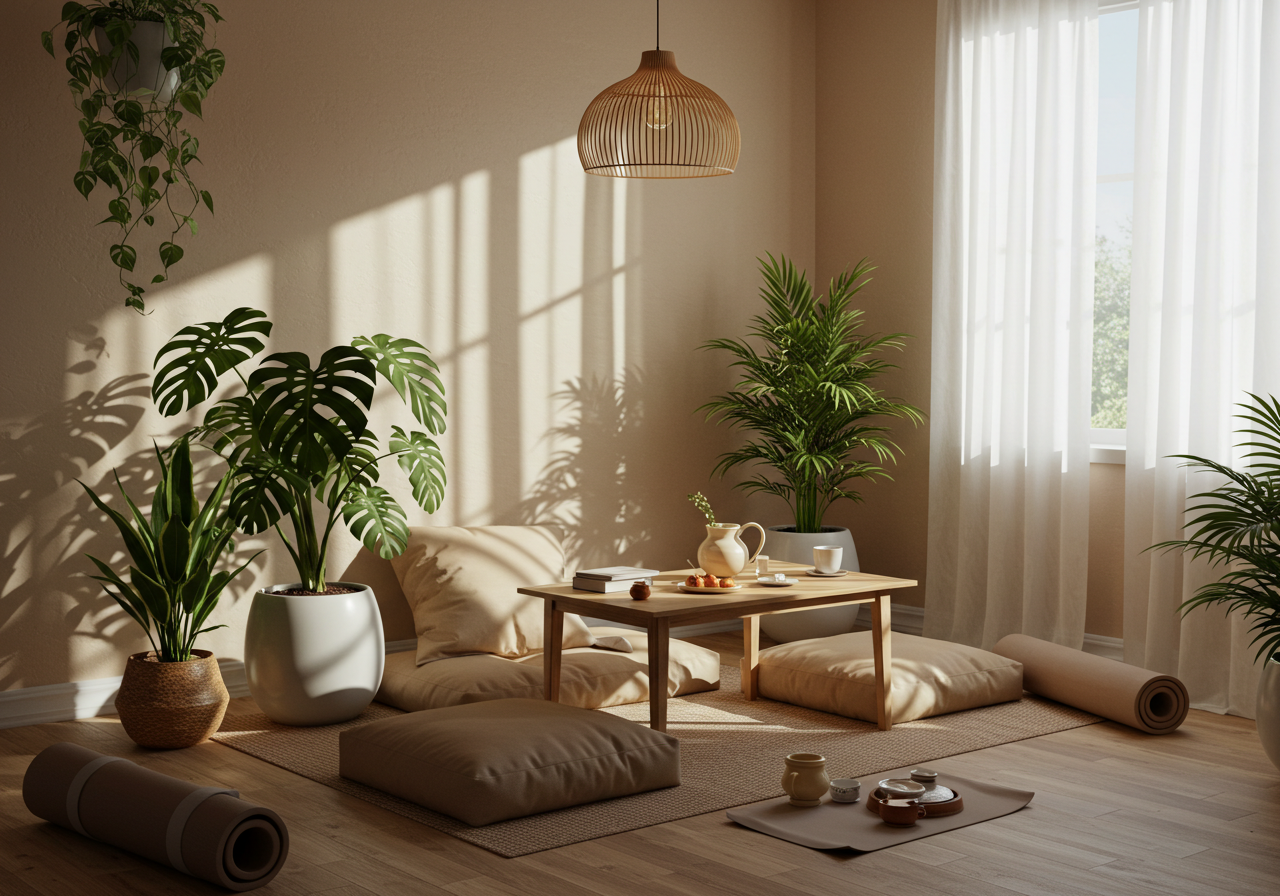
Create Visual Balance
Mix plant sizes and shapes for a harmonious layout. Combine tall plants like snake or rubber plants with small tabletop ones like aloe or lavender to maintain visual flow.
Layer in Natural Materials
Use terracotta, bamboo, or ceramic pots to enhance the earthy aesthetic. This supports the calming mood while grounding the space energetically.
Location Matters
Place plants in areas you frequent near your desk, beside your bathtub, or in meditation corners. This ensures daily interaction and mood-boosting benefits.
For room-by-room layouts and shelf styling, see this guide and our plant shelf styling ideas.
Sensory Benefits of Indoor Greenery
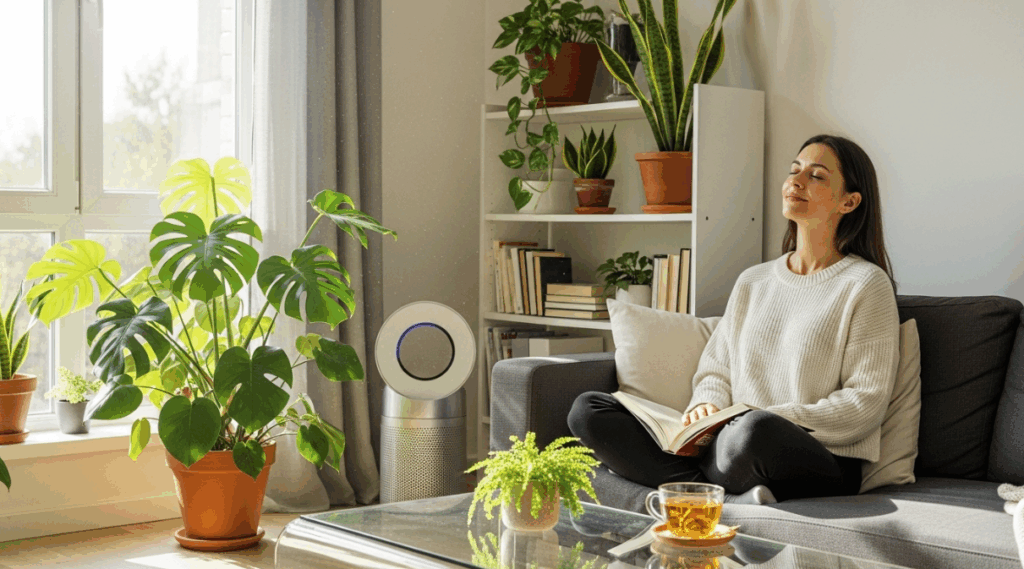
Touch and Texture
Running your fingers over soft moss, spiky aloe, or velvety leaves connects you to the tactile world. These textures support mindfulness and present-moment awareness.
Scents for Relaxation
Plants like lavender or eucalyptus provide natural aroma that can calm the nervous system. Pair them with natural diffusers to enhance their effects.
For scent-related outcomes, see controlled studies on sleep quality and anxiety.
Sound and Air Movement
Place plants near open windows or fans hearing leaves rustle gently mimics nature’s soothing sounds and contributes to emotional calm.
Low-Budget Tips to Green Your Space
- Start with cuttings from friends or neighbors to grow your own plants
- Use recycled jars, cans, or bowls as eco-friendly planters
- Buy small starter plants instead of mature ones they’re more affordable and just as rewarding
- Explore local farmers’ markets for fresh, inexpensive greenery
- Rotate plants seasonally to match light conditions and refresh your space
Tools and Add-Ons for a Thriving Green Corner
- Soil moisture meter for hassle-free watering
- Grow lights for low-light environments
- Misting bottle for tropical plants needing humidity
- Self-watering pots for travel or busy routines
- Natural fertilizer like compost tea or worm castings
FAQs
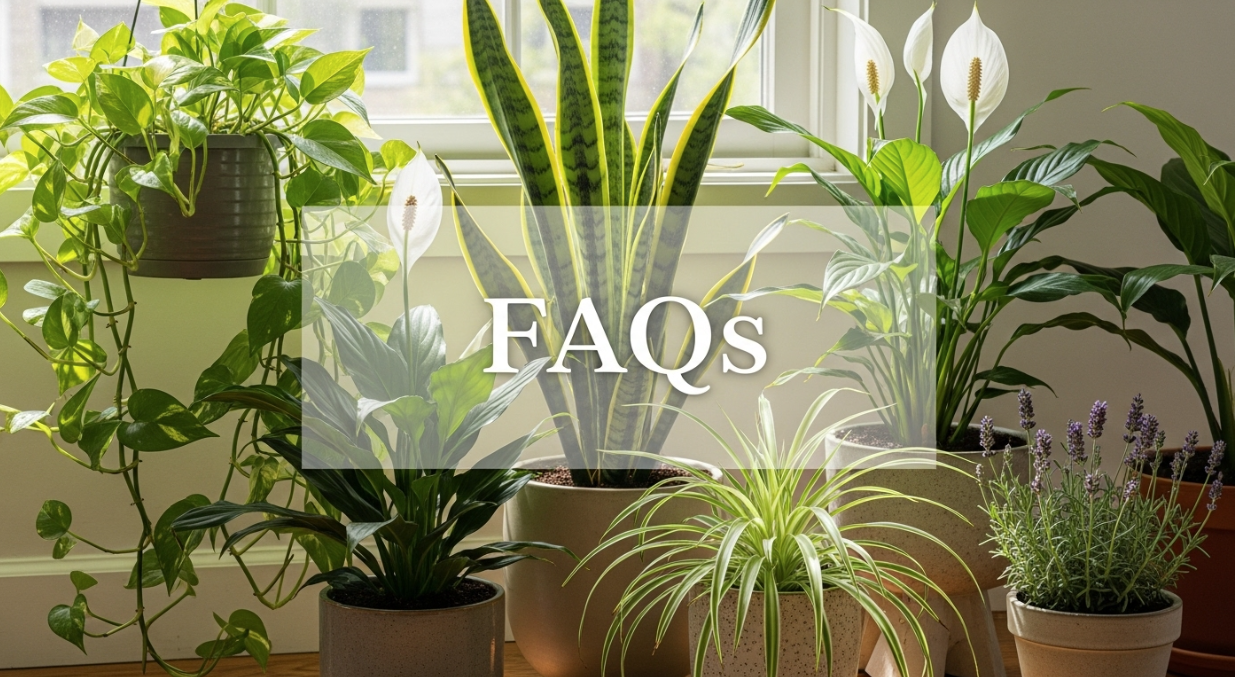
Do indoor plants really improve air quality?
Yes. NASA studies have confirmed that certain plants remove toxins from indoor air, while increasing humidity and oxygen levels.
Context: chamber studies show removal of VOCs (NASA), but home-scale effects vary; see EPA guidance.
Which plant is best for beginners?
Start with a snake plant or pothos. Both are hardy, forgiving, and grow well in most light conditions.
Beginner step-by-step care: Starter checklist.
How many plants do I need to see benefits?
Even a few plants can make a difference. Aim for at least one plant per 100 square feet for noticeable air-quality improvement.
Compare rules of thumb across sources: Google | Bing
Key Takeaways
- Indoor plants enhance air quality and support mental clarity
- You don’t need a green thumb many plants thrive with minimal care
- Sensory benefits like scent, texture, and sound promote relaxation
- Even budget-friendly setups can create impactful wellness spaces
Bring Wellness to Life One Plant at a Time
Nature has always had a quiet way of healing. By bringing indoor plants into your space, you invite not only beauty, but also clarity, calm, and connection. Start with one leafy friend and watch how your home and mind begin to bloom.
If this article inspired you, share it with a friend or explore our other guides on indoor wellness and mindful home design.
References
